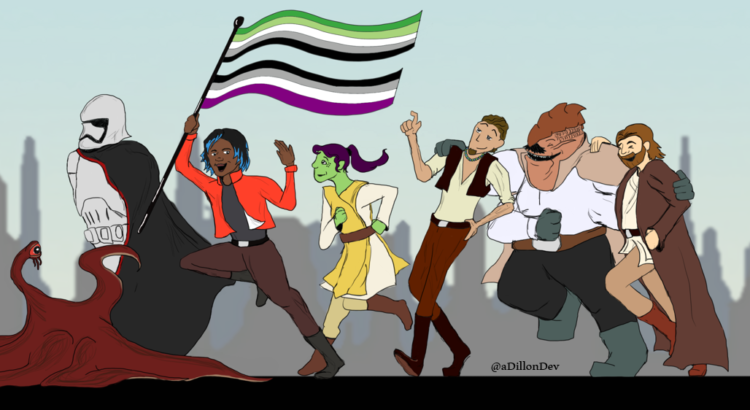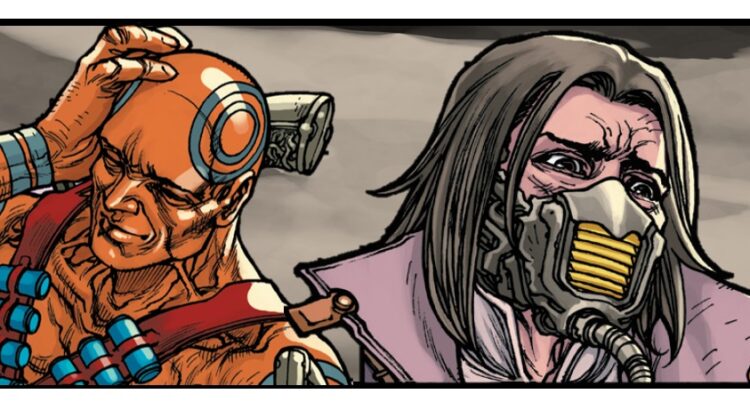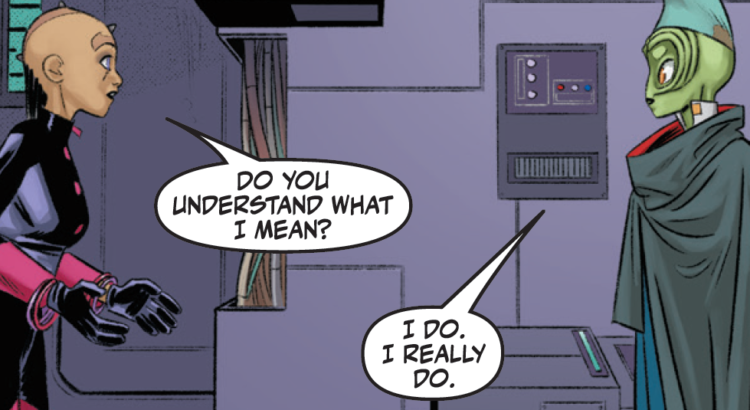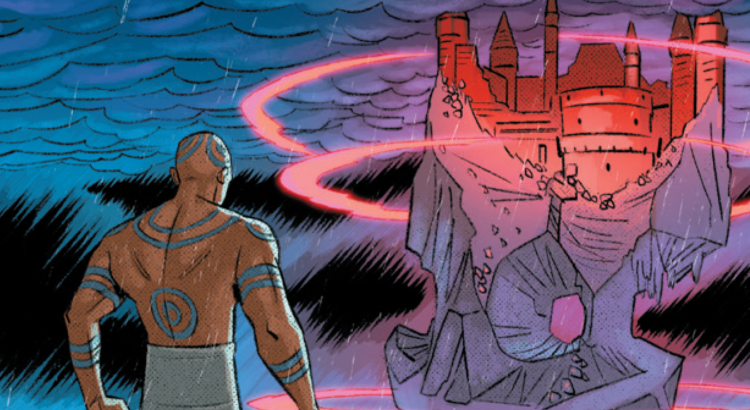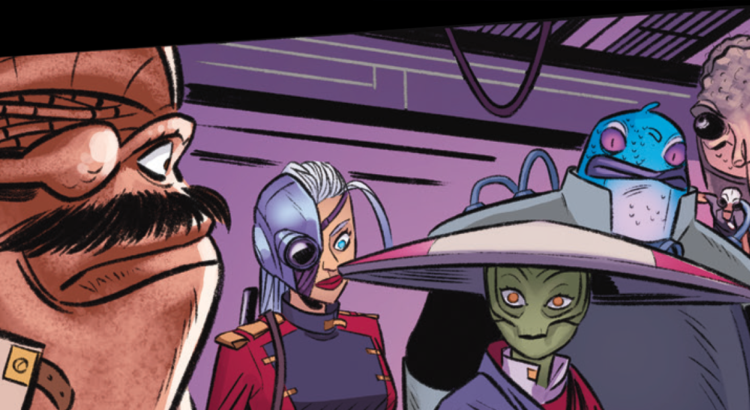I would love to say that it began with the second article I wrote for Eleven-ThirtyEight. I would love to say that it began with From a Certain Point of View. I love to say that “The Baptist” was our first aromantic and asexual representation in Star Wars. Though Omi is as alien as you could get – the dianoga of the trash compactor in A New Hope – the manner in which Nnedi Okorafor wrote her and her sexuality is dignified. Noble, even.
Unfortunately, the novel Phasma beat “The Baptist” to publication by little over a month. Within the novel, Phasma was described as never having been interested in relationships with men or women. It would be frustrating enough that our first aro/ace character was a villain, as a common microaggression against aro and ace people is interpreting our lack of attraction as a lack of compassion. But there were ways that this could have still worked. There are ways to make aro/ace villains that are compelling. What makes Phasma sting as our first aro/ace coding in Star Wars canon[1]Any potential aro/ace coding in Legends is another discussion. is the fact that the novel leans into that microaggression.
This lack of relationships is noted within the context of someone reflecting on how much crueler and more ruthless Phasma is, specifically in contrast to sympathetic characters who have partners. While I presume that author Delilah S. Dawson did not intend to say that Phasma is immoral because she is aro/ace, the framing nevertheless sends that message.
An inauspicious beginning for our representation. But far, far from the end.
Over the six years I’ve been writing for Eleven-ThirtyEight, many of my articles have focused on exploring aromantic and asexual representation and coding within Star Wars. We have come a long way over those years, and as the site closes its doors, this – my final article – will look back on the journey and ahead to new frontiers.
Read More
| ↑1 | Any potential aro/ace coding in Legends is another discussion. |
|---|
